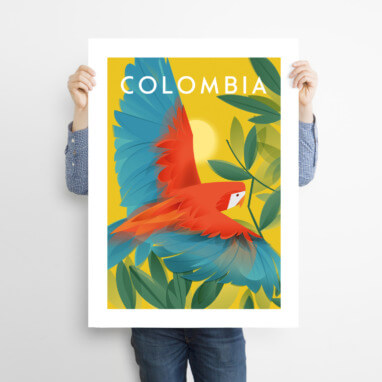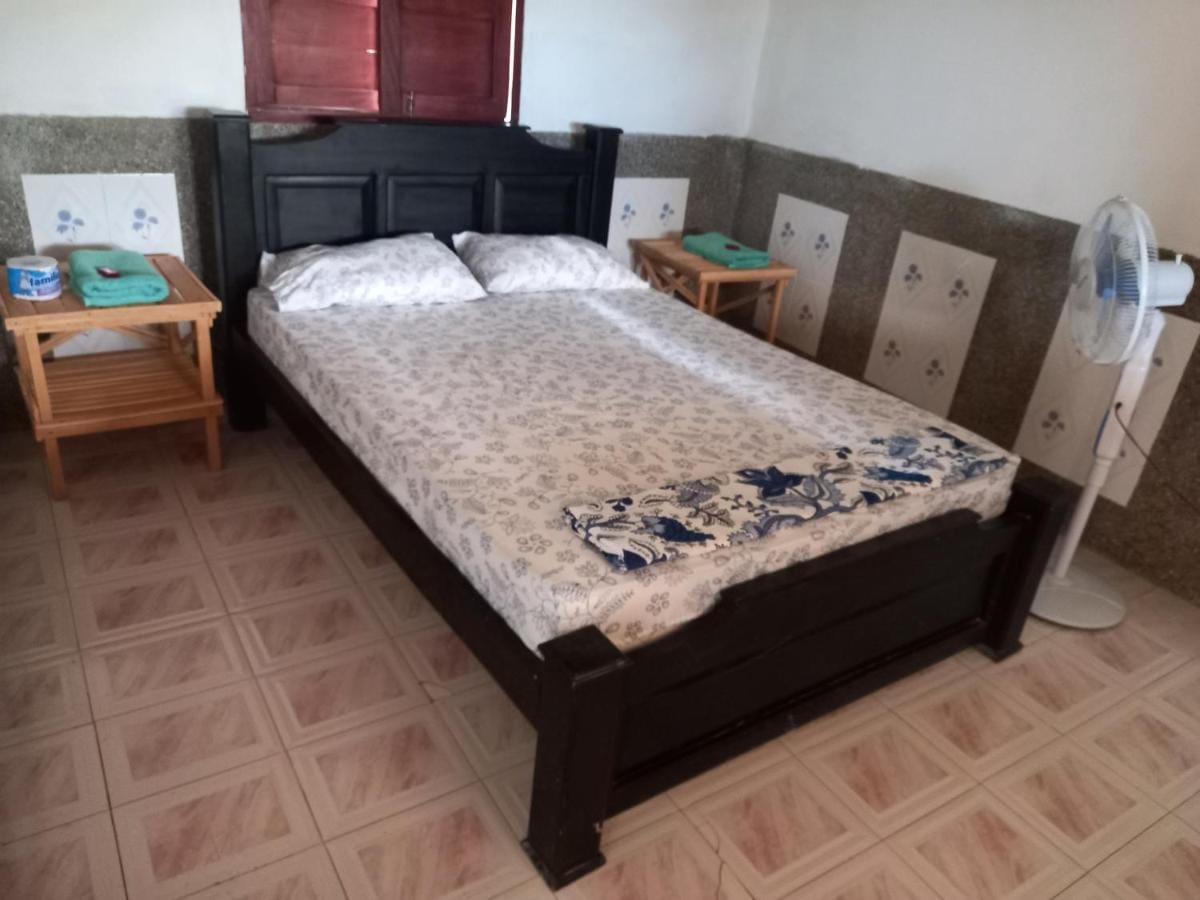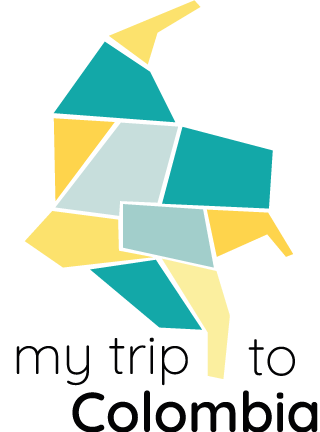We discovered Cabo de la Vela in the Guajira desert during an organized tour on a previous trip.
Like all the classic tours that bring tourists to the desert, we only passed through Cabo de la Vela. Time to take a few photos, have a quick swim, eat, sleep and we were off again.
Yet Cabo de la Vela deserves much more than just a stopover. We really hope to be able to return more calmly and take the time to really discover this sacred territory for the indigenous Wayuu.
Disclaimer: we apologize in advance for any grammatical or syntactic errors, as our native language is not English (we're a Colombian-French couple), so we hope you'll forgive us and still enjoy the information we share with you! Please note that all the information on our blog is based on our own experience, and is checked and updated regularly.
Contents
Related posts

PREPARING PSYCHOLOGICALLY FOR THE GUAJIRA DESERT
To avoid any surprises, we feel it’s important to have some information before setting off into the Guajira Desert. Here are a few things to expect:
- Plastic pollution around rancherias and villages
- Children blocking the road to beg
- Seeing families fetching water from rain holes
- Having a problem with your 4×4 (breakdown, puncture, etc.)
Exclusive 5% Off Discount For you
Best Travel insurance for Colombia
Our partner offers the best rates and a 5% discount for our blog readers
What to do in Cabo de la Vela
Sacred territory of the indigenous Wayuus

Cabo de la Vela isn’t just a mountain to climb, a lighthouse to visit and a beach to kite surf. No, Cabo de la Vela is sacred territory for the Wayuu, the indigenous people living on the Guajira peninsula.
So, before I give you a list of things to do in Cabo de la Vela, here’s some important information about Jepira, its name in the Wayuu language.
Jepira, the resting place of Wayuu souls
According to Wayuu cosmovision, Jepira is the place where the souls of the dead come to rest.
When a death occurs, following the burial of the deceased, a wood fire is lit, whose smoke represents the light that will lead the soul to Jepira. The soul (Yoluja) is accompanied to Jepira to rest before ascending to heaven. It will then return in dream form to maintain its link with its family.
In this way, the eternal circle of life is perpetuated, the snail-like form central to Wayuu culture and found on mochilas, on women’s faces for the Yonna dance, on the ground around trees for ceremonies, etc., etc.
THE JEPIRUA LEGEND
Wayuu culture is full of legends telling the story of the Wayuu people since its creation (to find out more, we recommend our post on the Wayuu people). One Wayuu legend tells the story of Jepirua, from whom the name Jepira is derived(source).
“Jepirua, a Wayuu woman, dreamed one night of a hill from which water gushed. When she awoke, Jepirua went to the place she had seen in her dream and found a fountain, identical to the one she had dreamt of. From then on, she went every morning to fetch the water she needed to survive on this earth.
Jepirua had two fishermen sons who, seeing their mother fetch water every day, wondered where she could have come from. They followed her in secret to find out her secret and discover the source. When Jepirua turned to see who was watching, she saw her two children, but she turned to stone.
Here, at Lojou (Ojo de Agua beach), there are rocks that bear witness to this event, and from this Wayuu woman was born the name Jepira”.
Cabo de la Vela, sacred territory
The Cabo de la Vela is a sacred place where the world of the living and the dead communicate. A sort of antechamber for souls before eternal rest. Jepira appearing in a Wayuu’s dreams is considered a premonition, heralding a death to come.
So there you have it. Cabo de la Vela is a place of great importance in Wayuu culture, and we felt it important to set the scene before continuing. A setting that few organized tours tell tourists about.
Cabo de la vela Tour with Responsible Local Agency
It’s essential to go into the desert with a serious agency. Paola’s agency is one of the few in Riohacha to have developed responsible tourism in the Guajira desert. You can go with your eyes closed and break the piggy bank to go as far as Macuira!
Climbing Kamaichi (Pilon de Azúcar)
Best things to do in Cabo de la Vela

Cerro Kamaichi (Pilon de Azucar) is undoubtedly Cabo de la Vela’s best-known landmark. The “sugar loaf” is a small, pointed mountain overlooking a jagged coastline that stretches all the way to the famous Cape (cabo).
The ascent to Pilon de Azucar is easy, and at the top you should be greeted by an ox-cart wind! The panorama from up there is nothing short of spectacular, between sea and desert, the contrasts are breathtaking.
GETTING AROUND CABO DE LA VELA
Please note! It’s very important to know that once you arrive in the village of Cabo de la Vela, it’s very difficult to get around on foot to visit the various tourist sites. You’ll be able to enjoy the village and the page, but not much more. Distances are long and the sun is beating down on the desert! So it’s best to find a local driver or motorcycle cab to take you to the various points of interest.
The beaches of Cabo de la Vela
Best things to do in Cabo de la Vela
Cabo de la Vela has many beaches. Located on either side of the cape, the Cabo’s beaches are truly different from one another.
Cabo beach

The beach in the village of Cabo is a long stretch of sand where the wind blows almost constantly. That’s why it’s the ideal spot for kite surfers. Of course, it’s possible to swim here, but it’s more for splashing around, as the water is very shallow over a considerable distance.
Playa del Pilon

This is a beach at the foot of Cerro Kamaichi (pilon de azucar) where you can swim in complete safety. It’s easy to get to, with steps down to the beach, a few shelters in the shade and Wayuu women selling handicrafts and cold drinks.
Playa Ojo de Agua (Lojou)

Playa Ojo de agua (The beach of the eye of the water) is a sacred site in Wayuu cosmology. This is where the legend that gave rise to the name Jepira originated. It’s a beach where you can swim and hike to the tip of Cerro Tortuga. A good alternative to the Cabo lighthouse for watching the sunset.
Playa Arcoiris

Playa Arcoiris (Rainbow Beach) is not really suitable for swimming, but it’s well worth a visit. The waves crash against the rocks and the sunlit spray of water forms an ephemeral rainbow.
Cabo de la vela Tour with Responsible Local Agency
It’s essential to go into the desert with a serious agency. Paola’s agency is one of the few in Riohacha to have developed responsible tourism in the Guajira desert. You can go with your eyes closed and break the piggy bank to go as far as Macuira!
See the sunset from the lighthouse
Best things to do in Cabo de la Vela

The Cabo de la Vela lighthouse is no longer in operation, but it has become the best-known site for watching the suns et. All organized tours take tourists to this strategic point at the tip of the cape. The spectacle of the sky setting ablaze over the sea is often magical!
Landing in a chinchorro
BEst things to do in Cabo de la Vela

The chinchorro is the Wayuu hammock ! A genuine hand-woven work ofart, chinchorros are truly immense. It’s the Wayuu “bed” where they sleep as a couple. You’ll see many chinchorros set out under shelters along the beach in the village of Cabo de la Vela. Don’t hesitate to take a siesta if you’re allowed!
Visit a Wayuu rancheria
Best things to do in Cabo de la Vela

If you decide to stay a few days in Cabo de la Vela, we recommend that you sleep in a rancheria to get in touch with the Wayuu culture. Today, some rancherias welcome tourists to sleep or simply to offer a cultural exchange in the form of a dance demonstration (we’re not really comfortable with this kind of thing, but it’s the reality of tourism, and it’s what’s on offer…) and a conversation about Wayuu culture. The rancheria Utta has always been recommended to us, but we haven’t tried it yet. I’ve heard it’s very good.
Cabo de la vela Tour with Responsible Local Agency
It’s essential to go into the desert with a serious agency. Paola’s agency is one of the few in Riohacha to have developed responsible tourism in the Guajira desert. You can go with your eyes closed and break the piggy bank to go as far as Macuira!
Kite surfing in Cabo de la Vela
BEst things to do in Cabo de la Vela

Cabo de la Vela is one of Colombia’s best spots for kitesurfing. For amateurs, it’s a destination not to be overlooked. And for beginners, it’s the perfect place for an introduction to kitesurfing!
Kite surfing is a kind of mix between surfing and kite flying, and it’s particularly fun and addictive!
Contact for Cabo de la vela Tour
As you’ll have understood, it’s essential to go into the desert with a serious local agency. After a mixed experience, we decided to look for an agency offering a different kind of tourism.
Paola’s agency is one of the few in Riohacha to develop responsible tourism in the Guajira desert.
Even if the tour basics are the same as the other agencies (Manaure, Cabo de la vela, Punta Gallinas, Macuira), the difference is in the details:
- Safety and reliability (mandatory breathalyzer test for all drivers and 4×4 inspection before each departure)
- More interaction with your Wayuu driver (they are not guides, but they are trained to answer your questions and interact with you)
- Maximum 5 people in 4x4s
- Visit to a Wayuu weaving workshop
- Share with locals around the sacred fire
- Share with the children of Nazareth (if you go to La Macuira)
- Turtle liberation (program to protect endangered Careta turtles)
- Swimming in luminescent plankton
- Community contribution (all services are provided by the community)
- Offers the Macuira Natural Park (and many other destinations in the department)
If you add to this the fact that Paola has been setting up social-interest projects throughout the department for many years, there’s nothing more to think about. Do you think her prices are a little more expensive than elsewhere? Now you know why, and more importantly, you know where your money is going.
We’d advise anyone who wants to do the classic Guajira Desert tour, including Cabo de la Vela and Punta Gallinas, to put in the budget and push on to Parc de la Macuira.
Contact Paola – Responsible local agency
Getting around Cabo de la vela
We’ll say it again, just in case, but it’s very important to know that once you’ve arrived in the village of Cabo de la Vela, it’s hard to get around on foot to the various tourist sites.
That’s why organized tours come in handy.
But if you choose to get to Cabo de la Vela on your own, you’ll find local drivers who can take you to the various points of interest.
Where to stay Cabo de la vela
It’s important to know what you’re getting into when you come to Cabo de la Vela. This is a remote area, where access to water and electricity is particularly complicated. It is therefore necessary to accept a level of comfort appropriate to the territory’s situation.
Many accommodations in Cabo de la Vela are fully booked by tour operators, and it’s difficult to find easily bookable accommodation online. So remember to book in advance if you’re coming on your own.
Cabo de la vela

Posada
Playa Arco Iris
Double room : $250.000 to $300.000 COP
For those who wants a classic room in Cabo de la vela
Cabo de la vela

Posada
Rancheria Utta
Double room : $400.000 à $700.000
One of the best options to stay in Cabo de la vela, with beautiful rooms and sea view
Cabo de la vela

Posada
Hospedaje El viejo moi
Double room : $250.000 to $300.000 COP
Private rooms with double beds and chinchorros in front of the sea in Cabo de la vela
Sleep in a rancheria
It’s possible to find rancherias that welcome tourists for the night. However, if you don’t go on an organized tour, you’ll have to wait until you get to Cabo de la Vela to find out about them. So, try to arrive early to have time to organize it!
Rancheria Utta has always been recommended to us. I hear it’s very good.
Sleep in a hammock
Once you’re in Cabo de la Vela, you should be able to negotiate sleeping in a hammock outside. It’s not expensive and it’s a typical Guajira sleeping arrangement! Just ask! If you choose this option, don’t forget your mosquito repellent 😉
How to get to Cabo de la vela
Cabo de la Vela is located in the Alta Guajira region, in the desert by the sea, a 2-hour drive from Riohacha, the department’s capital. To get started, you’ll need to travel to Riohacha.
Getting to Cabo de la Vela by public transport
From Riohacha, public transport runs to Uribia. From Uribia, other public transport services take you to Cabo de la Vela.
Riohacha <> Uribia by public transport
- Duration: 1h30
- Fare: $25.000 COP
- Departure from Roohacha bus terminal
Uribia <> Cabo de la Vela by public transport
- Duration: 2 hours
- Fare: $35.000 COP
- Departure from where you get off in Uribia
WARNING: the “public transport” is a dump truck where you are likely to travel standing up in the dust. The truck only departs when all seats are occupied. There is therefore no fixed departure time.
Getting to Riohacha by bus
Bus from Santa Marta to Riohacha (2h30)
From the bus terminal or Mercado Publico, take the bus to Riohacha.
- Fare: approx. $20.000 COP
- Companies: Copetran and many other small companies from the Mercado Publico
Bus from Cartagena to Riohacha (7h)
- Fare: approx. $40.000 COP
- Companies: Copetran, Unitransco, Expreso Brasilia
Getting to Riohacha by plane
To/from the airport
The airport is about 15 minutes by cab or 20 minutes by bus from downtown Riohacha
Flight from Bogota to Riohacha (1h40)
- Fare: approx. $160.000 COP
- Airlines : Avianca
Flight from Medellín to Santa Marta (1h15)
There are no direct flights from Medellín to Riohacha.
- Fare: approximately $150.000 COP
- Airlines : Avianca


